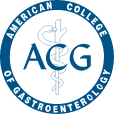Endoscopy is a common and safe procedure that allows doctors to examine your digestive system. If you’re concerned about gagging, rest assured there are effective techniques and advanced sedative options to make the experience comfortable.
Doctor Yuriy Israel explains, ‘99% of the time, you won’t gag because we use propofol, an anesthetic that induces deep sleep and suppresses the gag reflex. In places where conscious sedation is used instead of propofol, gagging may occur. However, with propofol, this is unlikely.”
What Is an Endoscopy?
An endoscopy is a medical procedure where a doctor uses a thin, flexible tube equipped with a camera to examine the digestive system. It helps diagnose and treat issues like stomach pain, acid reflux, or difficulty swallowing. Although it’s a safe and straightforward procedure, the tube may occasionally trigger a gag reflex.
What Causes Gagging?
The gag reflex is your body’s natural way of protecting your airway. When something touches the back of your throat, this reflex helps prevent choking. While this is helpful in daily life, it can sometimes be triggered during an endoscopy.
What Happens During an Endoscopy?
During an endoscopy, the doctor carefully guides a thin tube with a camera down the throat to examine areas like the esophagus, stomach, and the first part of the small intestine. This may seem intimidating, but the procedure is quick, safe, and often performed with sedation to enhance comfort.
Why Do People Gag During an Endoscopy?
Gagging occurs when the tube touches sensitive areas in the back of the throat, triggering the gag reflex. However, as the procedure is often done under sedation, the possibility of gagging is eliminated.
Why Choose Gastroenterology and Nutrition, P.C.?
At Gastroenterology and Nutrition, P.C., we combine state-of-the-art technology with compassionate care to ensure every patient feels supported and comfortable. Our experienced team prioritizes your health and well-being, making your endoscopy experience as smooth as possible.
What to Expect on the Day of Your Endoscopy
- Check-In: Upon arrival, you’ll check in and receive guidance from the clinic’s staff.
- Preparation: The healthcare provider will explain the procedure, address questions, and may administer a numbing spray or sedative.
- The Procedure: You’ll lie down while the doctor gently inserts the tube. The entire process usually takes 5 to 10 minutes.
- Recovery: Afterward, you’ll rest until the sedative wears off and can typically go home within 30 minutes.
Can Gagging Be Completely Prevented?
While gagging is a natural reflex, advanced sedation techniques, and careful preparation can significantly reduce its likelihood. By discussing your concerns with your doctor, we can tailor the procedure to ensure your comfort.
Final Thoughts
Endoscopy is an essential procedure that offers valuable insights into your digestive health. At Gastroenterology and Nutrition, P.C., we use advanced methods to ensure your experience is as stress-free and comfortable as possible.
If you’re due for an endoscopy, trust the experienced team at Gastroenterology and Nutrition, P.C. Contact us today to schedule your consultation and take the first step toward better digestive health.
FAQs
Does an endoscopy hurt?
Most patients don’t feel any pain during the procedure. With sedation or numbing sprays, we ensure you remain comfortable throughout.
How long does the procedure take?
An endoscopy typically lasts 5 to 10 minutes, with additional time needed for preparation and recovery.
Can I eat or drink before my endoscopy?
You’ll need to fast for at least 8 hours before the procedure to ensure a clear view for the doctor.
How soon can I resume normal activities?
Most patients can resume normal activities the same day, although we recommend avoiding strenuous tasks for 24 hours.
Disclaimer
This blog is for informational purposes only and is not a substitute for professional medical advice. Always consult your doctor for guidance tailored to your health. If you have questions or symptoms, reach out to a qualified healthcare provider.




